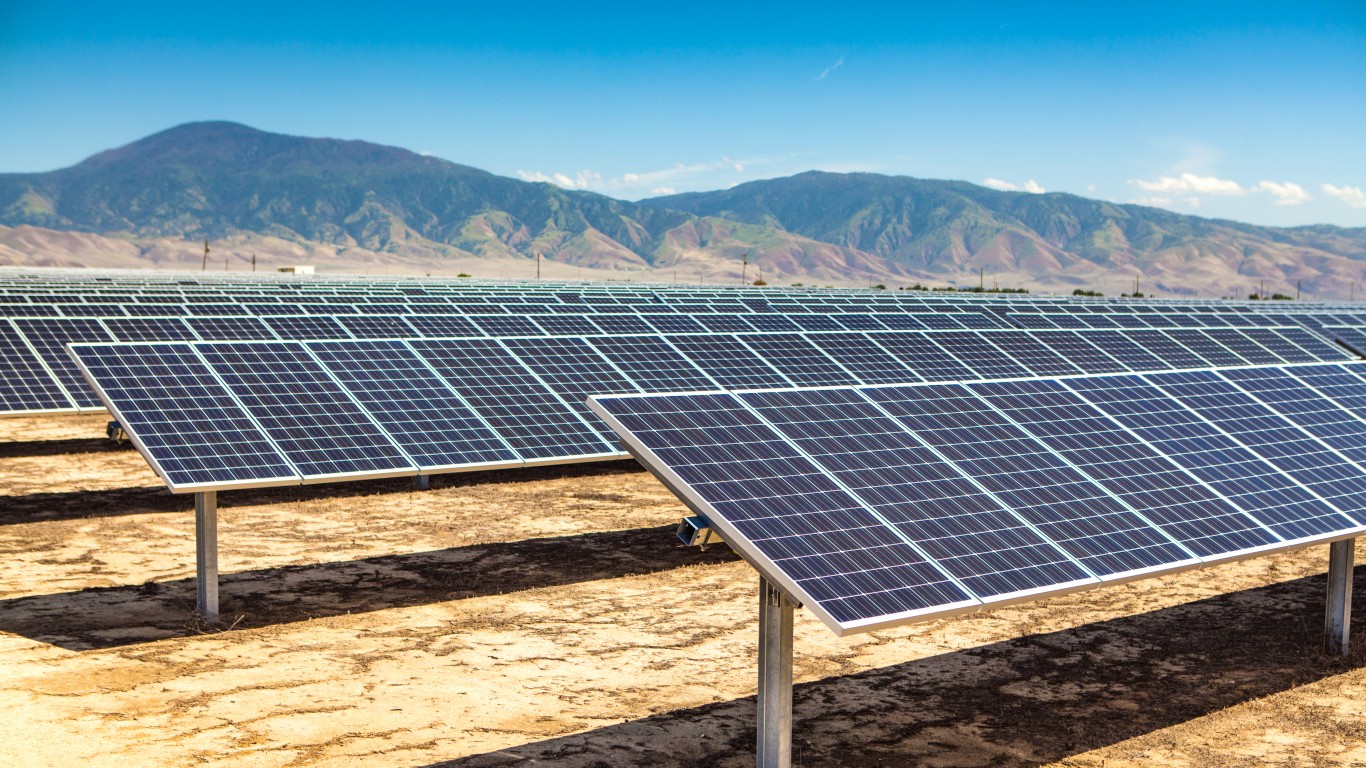
Array Technologies Inc. (NASDAQ: ARRY) manufactures the tracking systems used for utility-scale solar energy generation. The company also makes the software that adjusts the modules to compensate for weather and site conditions. It has been in business since 1989 but did not come public until an IPO last October.
After rising to a peak more than 40% above its IPO price in late January, the shares have trended lower and closed about 32% below the IPO price on Tuesday.
Then the company reported first-quarter results that missed profit expectations by a penny and beat revenue estimates by about $7 million (2.9%). Now things get really ugly.
The reason the stock traded down by about a third Wednesday morning is not lack of demand (which the company said is at its highest level ever) but “increases in steel and shipping costs that are unprecedented both in their magnitude and rate of change.” Those increases led Array to withdraw guidance for the fiscal year, saying that the higher costs “will impact our margins in the second quarter and potentially in subsequent quarters if prices do not normalize.”
In a note released Wednesday morning, Barclays has lowered its rating on the stock from Overweight to Underweight and reduced its 2022 price target from $32 to $16. The analysts see potential downside on the shares at nearly 36%, based on Tuesday’s closing price of $24.95. Barclays had raised its rating on the stock just last month. The firm upgraded the stock because Array’s fourth-quarter conference call led the analysts to believe “that [the first half of 2021] would be safe from steel price spikes (on procurement timelines), and that a steeper headwind would hit and/or be managed for later in 2021.”
However, “This all proved markedly untrue,” wrote analysts Moses Sutton and Eric Beaumont:
Now that the rest of the Solar group is down ~20% since earnings started, and given the fresh concerns around ARRY’s margins, volumes, earnings power, headwind length, and limited ability to control its destiny, we do not see a case for why investors should chase the stock or even place it in a neutral position within their portfolio.”
At the same time that Array released first-quarter results, the company also announced a supply deal with Nucor to produce components and to help Array with developing its next-generation products. Sutton and Beaumont note that Array had to do this, but the deal “could limit upside if steel re-traces.”
Analysts Paul Coster and Mark Strouse at JPMorgan took a different view on Array’s prospects. They write that “demand remains at record levels and the company is not being squeezed by existing contracts, but rather faces uncertainty regarding the timing and profitability of unsigned contracts, which may potentially be delayed beyond prior expectations.” The analysts maintained their Overweight rating on the stock but lowered the price target from $46 at the end of this year to $40 for December 2022.
That’s still more than double Barclays’ new target, but the JPMorgan analysts think the 24 times enterprise value-to-EBITDA multiple for 2022 “is attractive owing to prospects of nearly 20% EBITDA growth through 2023.”
Where the analysts at JPMorgan see an opportunity to buy the dip, Barclays’ analysts say that investors should refrain from doing so.
By late Wednesday morning, five brokerages had weighed in on Array. The other three were:
- Cowen: Reiterated Market Perform, lowered price target from $45 to $24
- Roth Capital: Downgraded from Buy to Neutral, lowered target from $53 to $25
- Piper Sandler: Downgraded from Overweight to Neural, lowered target from $53 to $27
Array’s stock traded at around $16.51 (down 33.8%), after setting a new 52-week low of $16.22 earlier in the morning. The stock’s 52-week high is $54.78. The consensus price target on the stock had been $44.65. The average daily trading volume on the stock is around 2.7 million. Late morning Wednesday, 11.6 million shares had changed hands so far.
Thank you for reading! Have some feedback for us?
Contact the 24/7 Wall St. editorial team.





